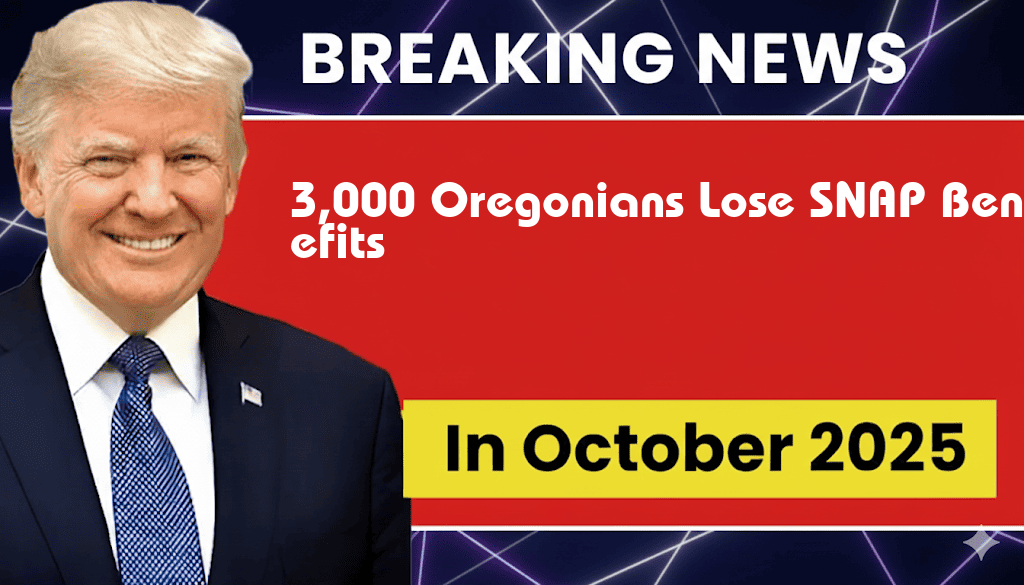

Over 3,000 Oregonians Lose SNAP Eligibility, Resulting in $3,000+ in Benefit Losses
In a significant development for low-income residents, over 3,000 Oregonians have recently lost their eligibility for the Supplemental Nutrition Assistance Program (SNAP). This change translates to a staggering loss of over $3,000 in benefits for many families across the state. The Oregon Department of Human Services (DHS) announced that the reduction in eligibility stems from a reevaluation of income thresholds and household sizes, which have shifted in response to federal guidelines. As a result, many families now face increased food insecurity, raising concerns among local advocates and policymakers about the impact on vulnerable communities.
Reasons Behind the Changes
The recent adjustments to SNAP eligibility are part of ongoing efforts to align state programs with federal regulations. The changes were prompted by a combination of rising income thresholds and a review of household compositions. Many families that previously qualified for benefits have seen their incomes rise, disqualifying them from receiving assistance.
Impact on Families
- Food Insecurity: Families impacted by the recent changes now struggle to afford basic necessities, with many turning to food banks for support.
- Increased Demand: Local food pantries and charitable organizations are experiencing an uptick in demand as families seek alternative resources to cope with benefit losses.
- Long-Term Consequences: Experts warn that the loss of SNAP benefits could have lasting effects on children’s health and educational outcomes.
Local Response and Advocacy
Community organizations and advocates are rallying to support those affected by the recent changes. Groups like the Oregon Food Bank are working tirelessly to provide resources and assistance to families facing food insecurity. They emphasize the importance of continued access to nutritious food for all Oregonians, especially as the state grapples with rising living costs.
In a statement, a representative from the Oregon Food Bank noted, “The loss of SNAP benefits for over 3,000 families highlights a critical need for systemic change. We must ensure that every Oregonian has access to the food they need to thrive.”
Comparative Analysis of SNAP Trends
| Year | Eligible Households | Number of Participants | Average Monthly Benefit |
|---|---|---|---|
| 2021 | 350,000 | 600,000 | $200 |
| 2022 | 340,000 | 590,000 | $210 |
| 2023 | 336,000 | 586,000 | $220 |
Looking Ahead
As Oregon moves forward, local leaders are urging the state to consider potential adjustments to its SNAP program to mitigate the adverse effects on struggling families. Policymakers are encouraged to explore ways to expand eligibility criteria, ensuring that families still in need do not fall through the cracks.
The recent changes underscore the ongoing challenges faced by low-income households in Oregon and the importance of community support systems. As more families navigate these difficult transitions, the role of local nonprofits and government agencies will be critical in fostering resilience and ensuring food security.
For more information on SNAP eligibility and resources available for affected families, you can visit the USDA SNAP page or the Oregon DHS SNAP page.
Frequently Asked Questions
What is SNAP and why is it important for Oregonians?
SNAP, or the Supplemental Nutrition Assistance Program, provides vital food assistance to low-income individuals and families in Oregon. It helps ensure that residents have access to nutritious food, which is essential for their health and well-being.
Why did over 3,000 Oregonians lose their SNAP eligibility?
The loss of eligibility for over 3,000 Oregonians is attributed to various factors, including changes in income, household size, or failure to complete the necessary recertification process. Such changes can significantly impact a person’s ability to receive SNAP benefits.
What are the consequences of losing SNAP benefits?
Losing SNAP benefits can result in a substantial financial burden for affected families, with an average loss exceeding $3,000 annually. This loss can restrict access to healthy food options and increase food insecurity among low-income households.
How can those affected regain their SNAP eligibility?
Individuals who have lost their SNAP eligibility can potentially regain it by reapplying or addressing the reasons for their disqualification. It is essential for them to stay informed about their eligibility requirements and ensure they complete any necessary paperwork on time.
What resources are available for Oregonians facing food insecurity?
Oregonians experiencing food insecurity can access various resources, including local food banks, community organizations, and state programs. These resources can provide immediate assistance while individuals work to restore their SNAP benefits.





